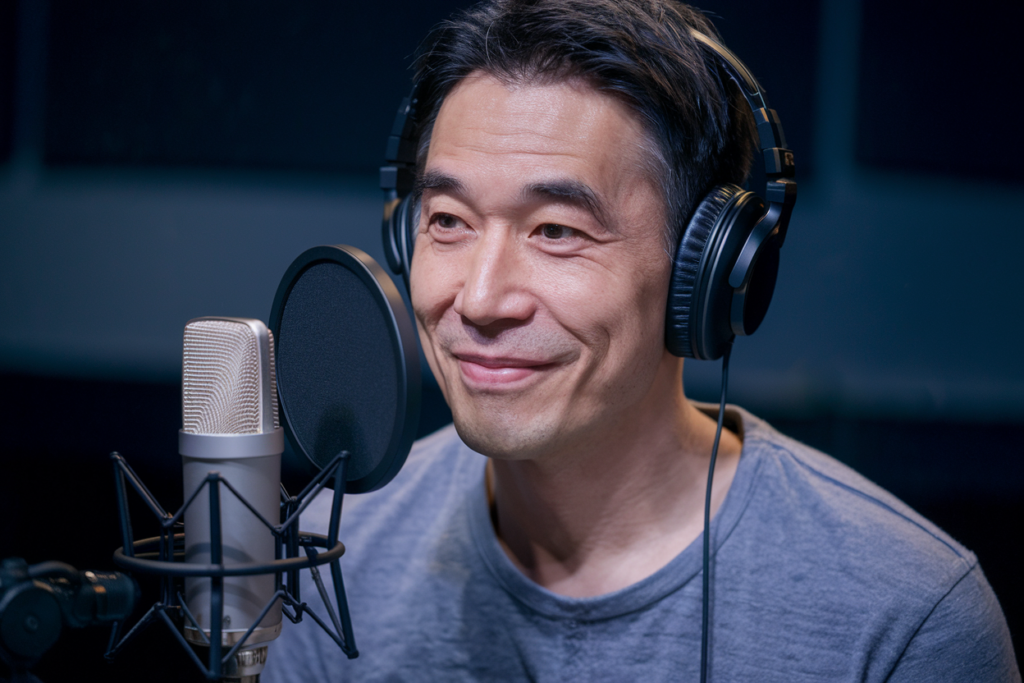Key Takeaways
- Cultural Immersion is Essential: Authentic Japanese voiceovers require a deep understanding of cultural context, including traditions and social norms, to deliver emotionally resonant performances.
- Focus on Key Characteristics: Aim for naturalness, emotion, clarity, and cultural relevance in your voiceover work to enhance authenticity and connect with listeners.
- Train Your Voice Regularly: Develop vocal skills through consistent practice in breath control and articulation. Consider working with a coach specialized in Japanese language techniques for personalized feedback.
- Master Pronunciation Nuances: Pay attention to pitch accent and vowel length as they significantly affect meaning. Use phonetic resources and immerse yourself in native speech for better intonation.
- Utilize Proper Expression: Convey the intended emotions of the script by practicing different tones aloud. Incorporate facial expressions during recording to enrich vocal delivery.
- Avoid Common Mistakes: Steer clear of over-exaggerating accents or neglecting cultural nuances; subtlety is key for authenticity in Japanese voiceovers.
Ever wondered how to nail authentic Japanese voiceovers? Whether you’re a budding voice actor or a seasoned pro, capturing the essence of the language can be tricky. It’s not just about pronunciation; it’s about conveying emotion and culture in every word.
Understanding Authentic Japanese Voiceovers
Achieving authentic Japanese voiceovers involves more than accurate pronunciation. It’s about immersing yourself in the language’s emotional and cultural nuances while delivering a natural performance.
The Importance of Cultural Context
Cultural context shapes how words are perceived. Understanding traditions, social norms, and regional dialects enhances your portrayal as a voice actor. For instance, using honorifics correctly can convey respect and formality, critical in many situations. When you grasp these elements, your delivery resonates with authenticity and connects with listeners on a deeper level.
Key Characteristics of Authenticity
Authenticity in voiceovers stems from various characteristics:
- Naturalness: Aim for a conversational tone that feels genuine.
- Emotion: Infuse your performance with emotion to reflect the intended message.
- Clarity: Ensure clear articulation to maintain listener engagement.
- Cultural Relevance: Incorporate culturally specific references or idioms appropriately.
By focusing on these aspects, you enhance your skills as a voice artist and craft performances that truly represent the essence of Japanese culture.
Tips for Achieving Authenticity
Achieving authenticity in Japanese voiceovers involves more than just reading the lines. It requires a connection to the language and culture, ensuring your performance resonates with listeners.
Training Your Voice
Training your voice is essential for any aspiring voice actor. Regular practice helps develop vocal range, tone, and clarity. Try exercises that focus on breath control and articulation. Record yourself to identify areas for improvement, listening for nuances that make your delivery sound genuine. Consider working with a vocal coach who specializes in Japanese language or acting techniques to refine your skills and gain valuable feedback.
Mastering Japanese Pronunciation
Mastering Japanese pronunciation sets you apart as a voice artist. Pay attention to pitch accent and vowel length; these elements can change meanings of words entirely. Use resources like phonetic charts or pronunciation guides tailored to Japanese sounds. Immerse yourself in native speech through movies, podcasts, or music, mimicking intonation patterns that enhance authenticity in your delivery.
Utilizing Proper Expression and Emotion
Utilizing proper expression and emotion brings scripts to life as a voiceover actor. Understand the context of each line—what emotions are conveyed? Are they joyful, serious, or melancholic? Practice reading aloud with different emotional tones until it feels natural. Use facial expressions while recording; even if they’re not visible on-screen, they influence vocal quality significantly by adding depth to your performance.
By focusing on these aspects—training your voice, mastering pronunciation, and utilizing expression—you’ll create authentic performances that resonate deeply with audiences tuning into your voiceovers.
Resources for Voice Acting
Voice acting requires not just talent but also the right resources to enhance your skills. Utilizing various tools and educational opportunities can significantly improve your craft as a voice actor.
Recommended Courses and Workshops
Consider enrolling in specialized courses or workshops that focus on voiceover techniques. Look for programs that cover essential topics such as:
- Vocal Techniques: Learn about breath control, articulation, and projection.
- Character Development: Understand how to create distinct voices for different characters.
- Emotional Delivery: Practice conveying emotions authentically through your voice.
Many institutions offer online classes, making it easier to fit training into your schedule. Network with fellow voice artists in these settings; connections can lead to valuable insights and opportunities.
Useful Online Tools and Software
Leverage technology to refine your voiceover skills. Several online tools and software options cater specifically to voice actors:
- Recording Software: Use programs like Audacity or Adobe Audition for high-quality recordings. These platforms allow you to edit audio files efficiently.
- Pronunciation Guides: Access resources like Forvo or online dictionaries that provide native pronunciations, helping you master difficult words.
- Script Analysis Tools: Explore applications designed to break down scripts by emotional tone or pacing, assisting you in delivering powerful performances.
By integrating these resources into your routine, you’ll find yourself better equipped as a voice actor prepared for any project that comes your way.
Common Mistakes to Avoid
When diving into Japanese voiceovers, steering clear of common pitfalls can enhance your authenticity. Here are two major mistakes to watch out for:
Over-Exaggeration of Accents
Voice artists sometimes amplify their accents in an attempt to sound more “Japanese.” This approach often leads to performances that feel forced and unnatural. Authenticity lies in subtlety; it’s about the right balance. Focus on nuance instead of exaggeration. Listen closely to native speakers, paying attention to how they pronounce words and phrases naturally. Mimicking this can enrich your delivery without veering into caricature.
Neglecting Cultural Nuances
Cultural context shapes language, making it vital for voice actors to grasp these nuances. Ignoring cultural references or emotions tied to specific phrases can diminish the impact of your performance. Research social norms, traditions, and regional dialects relevant to the script you’re working with. Integrating these elements helps convey genuine emotion and connection with the audience. Always remember: a deep understanding of culture elevates your voiceover work from good to truly authentic.
By avoiding these mistakes, you position yourself as a more credible and relatable voice actor in the world of Japanese voiceovers.
Conclusion
Achieving authentic Japanese voiceovers requires dedication and a deep understanding of the language and culture. By focusing on emotional delivery and cultural nuances, you can elevate your performances to resonate with your audience. Remember that consistent practice and training are key to mastering pronunciation and expression.
Utilize available resources like workshops and online tools to hone your skills. Embrace subtlety in your delivery while avoiding common pitfalls that could undermine authenticity. As you continue to refine your craft, you’ll find that each project presents an opportunity to connect more deeply with listeners through genuine performances. Stay committed to learning and growing as a voice actor, and you’ll successfully bring the essence of Japanese culture to life in every role.
Frequently Asked Questions
What are the main challenges in achieving authentic Japanese voiceovers?
Authentic Japanese voiceovers involve more than just correct pronunciation. Voice actors must convey emotion and cultural nuances while understanding traditions, social norms, and regional dialects to create relatable performances that resonate with listeners.
Why is emotional depth important in voice acting?
Emotional depth enhances a performance by allowing the actor to connect with the audience on a personal level. It helps convey the true meaning behind words, making dialogue feel genuine and impactful within its cultural context.
How can I improve my Japanese pronunciation for voice acting?
To improve Japanese pronunciation, focus on mastering pitch accent and vowel length. Regular practice, immersion in native speech, and working with a vocal coach can significantly enhance your delivery and authenticity as a voice actor.
What resources should I use for enhancing voiceover skills?
Consider enrolling in specialized courses or workshops that cover vocal techniques, character development, and emotional delivery. Online tools like recording programs and pronunciation guides can also help refine your skills effectively.
What common mistakes should I avoid in Japanese voiceovers?
Avoid over-exaggerating accents or neglecting cultural nuances. Instead of amplifying accents, focus on subtlety to maintain authenticity. Understanding cultural references is vital; failing to do so can diminish the impact of your performance.







